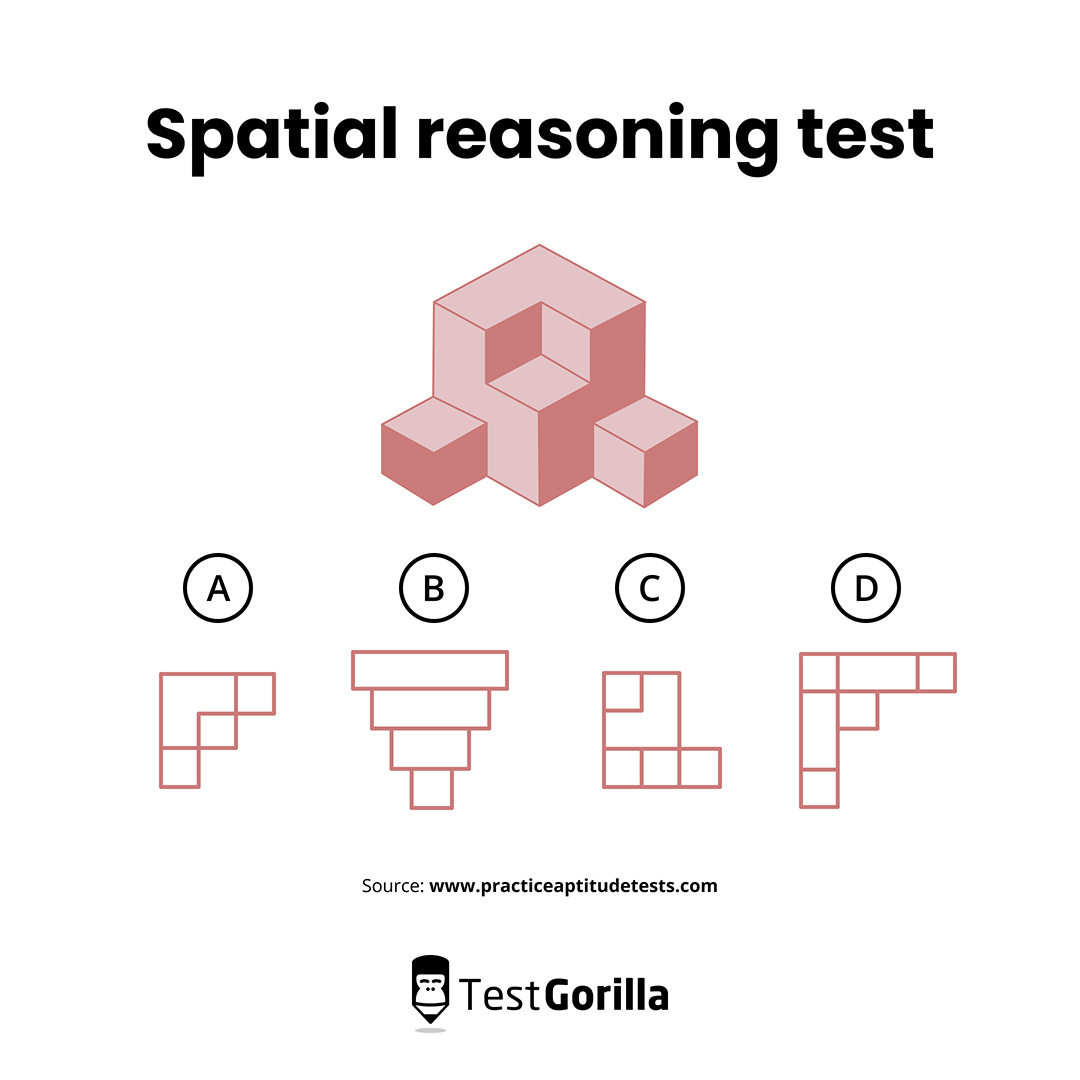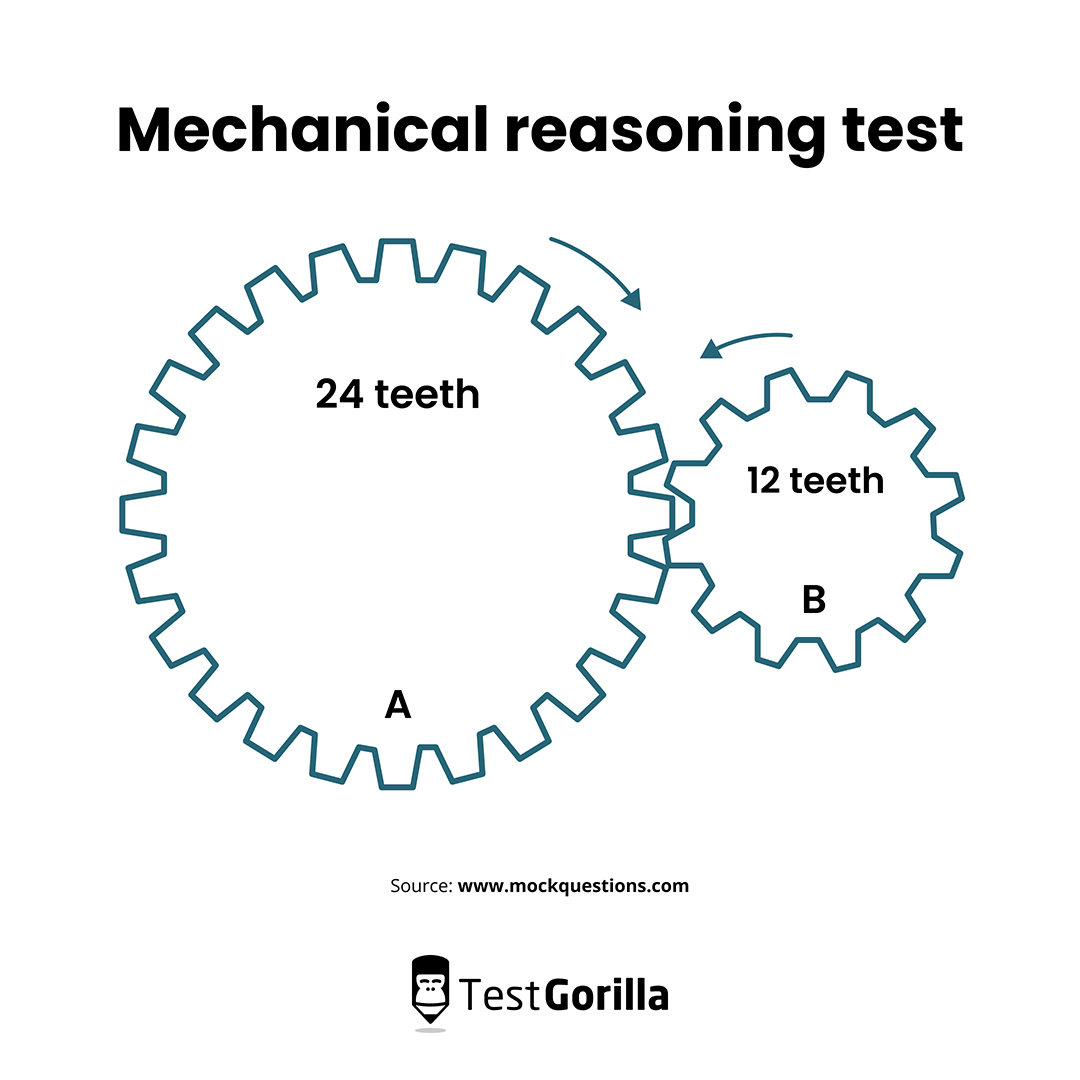

Shortlisting applicants using only traditional methods, like resume and cover letter screening, can lead to poorly informed decisions when hiring for a role. For instance, without objectively evaluating their skills, you might progress a candidate who lacks basic numerical skills, verbal reasoning, or problem-solving.
Aptitude testing helps prevent mis-hiring and assesses candidates’ strengths and abilities early on – so you can spend your time and resources on those who demonstrate the competence to succeed in a role.
Many recruiters still struggle to understand what aptitude tests are, what questions to include, and how to add them to a hiring campaign. In this guide, we explain all of this and more. Further, we also provide 12 free assessment test questions to add to your aptitude testing campaign today.
An aptitude test is a standardized assessment focusing on an individual’s skills and abilities rather than their existing knowledge or qualifications.
These tests can vary in what skills and competencies they’re assessing, but the most popular tests examine candidates’ natural talents for numerical reasoning, verbal reasoning, spatial reasoning, and problem-solving.
For instance, a verbal reasoning aptitude test can be used to evaluate and recruit a college student or a college graduate for an internship at a law firm. This test assesses their basic ability to understand and draw insights from written statements – an essential skill for the job, thus strengthening and fast-tracking the selection process.
Aptitude assessments are typically timed. They are conducted either online or manually with paper and pen and are commonly used as a screening tool in the early stages of the application process.
Here are a few different types of aptitude tests that you should consider adding to your recruitment process.
Numerical reasoning tests evaluate candidates' ability to work with numbers, interpret graphs and charts, and analyze datasets. With the digitization of work and growing focus on data, these tests are widely used across most industries and professions.
This type of aptitude test helps assess an individual’s proficiency in basic and advanced mathematical concepts and calculations. We have a range of online pre-employment math assessments, which are particularly useful when hiring for roles in finance, accounting, auditing, tech, and so on.
These tests measure a candidate’s ability to visualize and manipulate objects in three-dimensional space. They assess spatial awareness – an aptitude required for roles in engineering, architecture, and other STEM (science, technology, engineering, and math) fields.
These aptitude assessments look at a candidate’s understanding of mechanical and physical concepts and the ability to work with tools and machinery. These are most commonly used to evaluate candidates’ suitability for technical and mechanical roles, such as engineers, carpenters, plumbers, etc.
These tests evaluate an applicant’s language skills and comprehension of written information. They aim to measure candidates’ communication and analytical skills, which are required in almost every role and industry.
You can evaluate an individual’s ability to understand, extract, and interpret information in the form of written text by using reading comprehension tests. With emails, chats, and discussion threads so commonly used today, it’s critical for candidates to effectively communicate through reading and writing.
These tests measure a candidate’s ability to identify and solve complex problems. They’re a great way to assess how candidates can think on their feet and work under pressure to come up with creative solutions to real-world problems.
While these tests can be used across the board, they’re particularly useful when hiring financial analysts, customer service agents, programmers and engineers, and even admin assistants.
Assess an individual’s ability to make effective and rational decisions in different scenarios with decision-making tests. This involves evaluating a candidate’s sense of judgment, logical reasoning, and ability to weigh options to reach optimal outcomes. These tests are commonly used when hiring for management and leadership roles.
Aptitude test results tell you which applicants have the innate abilities to learn and succeed in a particular role. This means you don’t have to spend hours sifting through candidate resumes and cover letters or calling candidates by phone to screen them.
Additionally, aptitude testing helps you shortlist candidates early on, ensuring you only interview competent candidates at later stages.
Relying on resume and cover letter screening alone can be misleading. There’s no way to verify that candidates genuinely have the skills and abilities required for the job role.
Imagine hiring a head of engineering who is qualified on paper but, once employed, doesn’t exhibit the critical thinking skills needed for the role and lacks the decision-making abilities for effective leadership.
These qualities could have been easily assessed using critical thinking and situational judgment tests.
Using these tests in conjunction with role-specific skills tests, you can ensure that applicants have the skills and technical aptitudes required for the job, reducing your chances of mis-hiring.
Aptitude tests are a great way to uncover hidden talent. For instance, you can put entry-level candidates through these tests to see where their strengths lie before placing them into specialized roles.
You can also use aptitude tests to assess your existing employees’ natural abilities and talents. Test results could indicate they’re better suited to other roles, enabling you to optimize how work is split based on your employees’ strengths.
Providing candidates with feedback is an effective way to improve your employer brand and enhance the candidate experience.
Candidates want transparency on where they stand in the process, why they didn’t make the cut, and guidance on areas for improvement.
By sharing their aptitude test results, you can help them understand their strengths and development areas without spending much of your time writing lengthy feedback emails.
Hiring is usually plagued with unconscious biases at every stage, from resume screening and interviews to selection.
Aptitude assessments and other pre-employment tests are a great way to make objective hiring decisions. Most tests have right or wrong answers and are scored accurately using software – eliminating the need for human decision-making in the early stages of the application process.

The correct answer is A.
Direct sales of $17 million, $13 million, $16 million, $15 million, and $14 million add up to a total of $75 million.
Indirect sales of $16 million, $17 million, $18 million, $17 million, and $18 million add up to a total of $86 million.
The difference between $75 million and $86 million is $11 million.
The final price is $52.
It’s calculated as follows:
$80 - (0.25 x $80) - (0.10 x $80) = $52
The profit margin as a percentage is 31.82%
It’s calculated as follows:
(($2.2 million - $1.5 million) / $2.2 million) x 100 = 31.82%

The correct answer is A.
This is because the height doesn’t matter when looking from above. You will need to imagine a 2D outline of the image from above – which will look like option A.

The correct answer is C. Based on the diagram, gear B will make two revolutions for every revolution made by gear A. So gear B will make 50 x 2, which is 100 revolutions.
No. This is because the first two statements establish that all politicians are public speakers and some public speakers are lawyers, but they don’t provide evidence that all lawyers are politicians.
The correct answer is A.
The statement asserts that all the flowers in the garden are red roses, meaning there are no other types or colors of flowers in the garden.
Passage for candidates to read:
“In recent years, the rapid advancement of technology has transformed nearly every aspect of our lives. Technology has become an integral part of modern society, from smartphones that serve as personal assistants to autonomous vehicles that navigate our roads. The possibilities seem limitless with the rise of artificial intelligence and the Internet of Things (IoT).
However, along with these innovations come challenges related to privacy, cybersecurity, and the ethical use of technology. As technology evolves, individuals and organizations need to adapt and find a balance between convenience and responsibility.”
The correct answer is C. Technology will continue to evolve and present both opportunities and challenges.
The correct answer is B. It prevents the misuse of advanced technology.
The correct answer is 48/95.
The probability is calculated as follows:
(The number of ways to choose one red ball from 12) x (The number of ways to choose one blue ball from eight) / (Total number of ways to choose two balls from 20)
The correct answer is C.
Hiring more servers directly addresses the root problem of slow service.
The correct answer is D.
Assessing customer feedback will help to identify the underlying causes of declining sales so you can make informed decisions and targeted improvements.
Consider these top tips to add aptitude testing to your hiring process effectively.
You don’t need to put every candidate through each type of aptitude test. Assess job requirements to determine which tests candidates should take during the screening process.
While you can create your own aptitude test questions and answers, don’t rely solely on this method.
Use reputed aptitude testing software, like TestGorilla, to roll out different types of aptitude tests to candidates. The best tools offer a custom questions feature so you can add some of your own questions and the free assessment test questions shared in this guide.
Online aptitude testing saves you time, and questions are carefully crafted by subject-matter experts. Plus, these online tools will automatically score the candidates’ answers, enabling you to quickly and accurately filter out those who don’t have the skills you are looking for.
While aptitude tests are critical to your hiring campaign, they shouldn’t be the only tools used to assess candidates. The best way to evaluate a candidate’s suitability for a role is to take a multi-measure approach using a combination of screening methods.
For example, TestGorilla has a range of online tests, including:
Using these tests together can give you a well-rounded and complete view of candidates to make better hiring decisions.

In contrast to resume and cover letter screening, aptitude tests help to objectively assess your applicants’ core capabilities, strengths, and likelihood to excel in a role.
However, it’s not easy to create a well-balanced and robust set of questions for every type of aptitude test. Plus, it’s time-consuming to analyze responses.
TestGorilla is a leading pre-employment screening platform that offers ready-made aptitude tests to evaluate candidates on numerical reasoning, critical thinking, problem-solving, reading comprehension, decision-making, and more.
Explore TestGorilla by signing up for a free plan, scheduling a free 30-minute live demo, or taking a product tour today.

“You harm your bottom line if you don’t look after the people who bring in the people”: A conversation with Katrina Collier

Assistant director template: Everything you need to include

How to be an equal opportunity employer
Why not try TestGorilla for free, and see what happens when you put skills first.